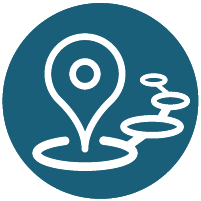Unlocking Data Visualization for Elementary Educators: A Beginner’s Guide to Looker Studio
,
HBGCC - Posters, Table 9
Session description
Outline
Interactive Poster Session Plan: From Data to Stories in 15 Minutes
Session Goal: To deliver a visual, interactive, and impactful 15-minute engagement cycle for a walk-up audience.
Component 1: The Hook & Introduction (Time: 1-2 Minutes)
Content and Engagement:
Content Presented: My presentation begins with a high-energy, verbal "hook." The core message is simple: "Data can be overwhelming, but a free tool can turn it into a clear story in seconds." The poster itself will have a large, compelling title (e.g., "Drowning in Data?") and visuals of a spreadsheet transforming into a vibrant chart.
Audience Engagement: I will actively invite people who pause at my poster into the conversation with a welcoming, energetic opening line. The goal is to connect with them immediately over a shared problem.
Process and Audience Participation:
Frequency/Tactics: This is a continuous, presenter-driven process. As individuals or small groups arrive, I will initiate the hook. The primary tactic is my enthusiastic, verbal pitch, supported by the static visuals on my poster.
Audience Activity: The audience participates by stopping to listen. Their initial engagement is passive curiosity, which my hook will convert into active interest in seeing the promised solution.
Component 2: Live Demo & Guided Analysis (Time: 7-8 Minutes)
Content and Engagement:
Content Presented: This section merges a live demonstration with guided analysis. I will perform a quick, polished demonstration on a laptop or tablet. I'll show the "before" (a messy spreadsheet) and the "after" (a pre-built, interactive Looker Studio dashboard). I will click on a few key filters (e.g., by student, by standard) to show how the data story changes instantly.
Audience Engagement: Engagement is driven by a powerful "show, don't tell" approach. After my quick demo, I immediately hand over the controls (mouse or tablet) to an audience member, saying, "Now you can drive. Click on a student and tell us what story their data tells you."
Process and Audience Participation:
Frequency/Tactics: This is a mix of a device-based demonstration (by me) and a hands-on activity (by the attendee). The tactic is to move from demonstration to delegation swiftly. This creates an immediate, tangible connection to the tool. I will facilitate a peer-to-peer interaction by asking the group what they see in the data the person is displaying.
Audience Activity: An audience member will physically interact with the dashboard. The rest of the small group will participate by observing, discussing the data, and answering my guided questions. They are actively analyzing data and co-creating insights with me and their peers.
Component 3: Intervention Brainstorm & Resource Takeaway (Time: 5 Minutes)
Content and Engagement:
Content Presented: This component combines brainstorming for interventions with a resource takeaway. While the attendee is still exploring the dashboard, I will ask, "Based on what you see, what's one simple intervention you could try for this student?" After a brief discussion, I'll pivot to the takeaway. I will point to a large, prominent QR code on my poster and explain that it links to helpful resources (the demo dashboard, sample data, a quick-start guide, and my contact info).
Audience Engagement: The engagement here is two-fold. First, a collaborative, problem-solving discussion about practical classroom applications. Second, a clear call-to-action that empowers them to leave with everything they need to get started on their own.
Process and Audience Participation:
Frequency/Tactics: The first part is a collaborative activity focused on intervention strategies. The second part is a device-based activity where attendees use their own phones to scan the QR code. I will have a concise closing spiel ready that summarizes the benefits and thanks them for stopping by. This provides a clean end to the loop, allowing me to reset for the next group.
Audience Activity: The audience participates by sharing intervention ideas. Their final action is to scan the QR code, ensuring they can take the learning beyond the poster session.
Supporting research
How Data Can Improve Student Learning - This article by the National Center for Education Evaluation and Regional Assistance (NCEE) highlights the role of data in enhancing educational outcomes. It discusses strategies for identifying struggling students, tailoring instruction, and monitoring progress. https://learningportal.iiep.unesco.org/en/issue-briefs/monitor-learning/using-data-to-improve-the-quality-of-education
Using Data to Improve Student Learning - This guide from the Institute of Education Sciences outlines how data-driven decision-making can enhance teaching practices and student outcomes. It provides evidence-based recommendations for educators on utilizing data effectively https://ies.ed.gov/ncee/wwc/Docs/PracticeGuide/dddm_pg_092909.pdf
The Role of Data Visualization in Education - This article discusses the impact of data visualization tools in education, emphasizing how they enhance student engagement and understanding of complex data. It covers various applications of data visualization in the classroom.https://www.edutopia.org/article/boosting-students-data-literacy/
Presenters

Session specifications
Topic:
Grade level:
Audience:
Attendee devices:
Attendee device specification:
Participant accounts, software and other materials:
Chrome Browser is recommended
Google account also recommened
Subject area:
ISTE Standards:
Learner
- Set professional learning goals to apply teaching practices made possible by technology, explore promising innovations, and reflect on their effectiveness.
Empowered Learner
- Use technology to seek feedback that informs and improves their practice and to demonstrate their learning in a variety of ways.

 Back
Back Trips and Tours
Trips and Tours